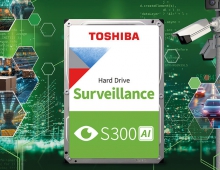
Toshiba, NEC Electronics, and Fujitsu Agree on "COSMORAM Rev.3" Common Specifications for PSRAM
Toshiba, NEC and Fujitsu today announced that they have agreed on standard interface specifications for Pseudo Static Random Access Memory with burst mode.
Based on the specifications, known as COSMORAM (Common Specifications for Mobile RAM) Rev. 3, each of the three companies will independently begin production and sales of PSRAM devices, with products scheduled to be available from each company starting March 2005.
The three companies created common specifications in September 1998 for stacked multi-chip packages (MCPs), which include both Flash memory and SRAM. The companies jointly announced common interface specifications for page mode PSRAM and stacked MCPs in March 2002, and for burst mode PSRAM and stacked MCPs in February 2003. As a result of these agreements the three companies share interface specification compatibility for PSRAM featuring high-speeds and for which higher densities can be easily achieved, thereby enabling customers to efficiently use the companies' PSRAMs.
Building on these past agreements, the companies have now standardized additional specifications for burst mode PSRAM that ensure continued compatibility with existing products while enabling higher performance and convenience, making COSMORAM Rev.3 ideal for future mobiles phones and PDAs which require greater high-speed processing of information.
Customers can continue to standardize design formats hereafter as with past COSMORAM specifications for PSRAM, eliminating the need to customize product designs. The advantage will help shorten the design cycle and dramatically improve design efficiency for customers. In addition, since the three companies are using common specifications, they can also act as alternative sources for each other, helping to ensure a stable market supply of PSRAMS.
Key additional COSMORAM specifications that were standardized are as follows:
- Expansion of data bus width
- Multiplexing of address data
- Truth Table (*2)
- Mode Register (*3) option added
- Choice of output driver size
- Mode Register read-out function





















